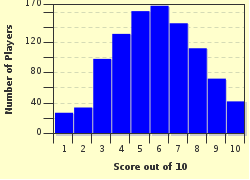Quiz Answer Key and Fun Facts
1. What was the British plane credited with the most kills during the famous Battle of Britain?
2. This city was supposed to be captured on D-day by the British and Canadian I Corps, but ended up taking months to capture.
3. The Chinese Nationalist President Chiang Kai-Shek believed this enemy to be a greater threat than the Japanese.
4. This Sherman variant boasted a much more effective 17 pounder gun.
5. When Field Marshal Friedrich Paulus was surrounded outside of Stalingrad, a German general led a break-in attempt to save him. Who was this German general?
6. After the war ended, who became the military governor of Japan?
7. What was the unusual Krummlauf weapon meant to do?
8. Japanese troops under General Yamashita raced down the Malayan Peninsula using these vehicles to easily traverse the dense jungles.
9. Name the largest German battleship in World War II.
10. What are the only American tanks to bear (unofficially) the name of a World War II commander?
Source: Author
kabeesh
This quiz was reviewed by FunTrivia editor
bloomsby before going online.
Any errors found in FunTrivia content are routinely corrected through our feedback system.

